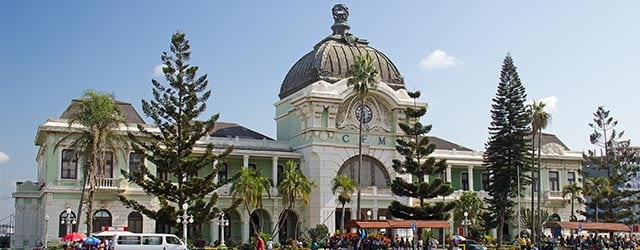Mining and gas reserves made Mozambique a darling among foreign investors—until last year. Now the government needs to diversify.

Over the past decade and a half, Mozambique has been an economic star, ranking among Africa’s top performers. Since 2005 the country that emerged from a 16-year-long civil war in 1992 has achieved average annual GDP growth of 7.5%, according to the World Bank.

This sterling performance was buoyed by coal, which Mozambique began mining and exporting only a few years ago; broad expansion in the financial services, construction and agricultural sectors; and an inflow of foreign direct investment. In 2012 and 2013, “investors’ hopes were boosted by confirmation of gas discoveries, and there was a prospect of steady inflows of revenue starting before the end of the decade,’’ says Colin Waugh,partner at SCP Africa Research & Investment, which has offices in London, Johannesburg and Mozambique’s capital city of Maputo. Indeed, in 2014, Mozambique received $6 billion in FDI, more than any other African nation. And late last year the companies that discovered the gas fields, Anadarko Petroleum and Italy’s ENI, agreed to co-develop them and to build onshore facilities to produce liquefied natural gas (LNG) for export to Asia.
But like most African economies that depend heavily on commodities exports, Mozambique is suffering from their price drop, and the government must find ways to diversify the economy to rekindle its momentum. The World Bank estimates that growth slowed to 6.3% in 2015, the result of falling aluminum and coal prices and a drop in FDI. “The price of aluminum, which accounts for a quarter of Mozambique’s exports, came under pressure in 2015, declining to a six-year low and thus addingsignificant weakness in foreign currency earnings,’’ says Abiola Rasaq, head of investor relations at United Bank for Africa, based in Lagos, Nigeria.
Mozambique has coking or metallurgical coal, which is used to make steel. But the country’s coal industry has been plagued by infrastructural shortcomings, especially the difficulty in expanding the railways needed to move the product from the mines to the ports. Coal prices, which have fallen by more than half since 2007, are an even bigger problem.
The earnings decline is causing severe fiscal strain. Reserves fell by 22%, to $2.5 billion, in August 2015, from $3.2 billion a year earlier, according to central bank estimates. The metical, the Mozambican currency, lost more than 40% against the US dollar last year. Meanwhile, the budget deficit swelled from 10.3% of GDP in 2014 to 11.1% in 2015. Planned spending cuts are intended to trim the shortfall to 10.2% this year. Yet the pressure on public spending is far from over.

Dodgy fiscal moves on the government’s part have added to Mozambique’s woes. One example: The sale of $850 million worth of seven-year bonds by Ematum, the state-owned fishing company, in 2013. The proceeds were ostensibly for purchase of fishing equipment, but they ended up being spent largely on defense. Shenanigans aside, the state guaranteed the debt, so repayment falls on its shoulders. The first installment, $77 million paid in early October 2015, put a dent in the current account. “Ematum has become a very significant element in the lowered prospects for economic performance of the country,” says Waugh. Negotiations to reschedule the debt began late last year, but Waugh says success “will take an enormous amount of effort,luck and goodwill on the part of the counterparties, which may or may not be forthcoming.’’
In mid-December, Moody’s Investors Service placed Mozambique’s B2 government issuer rating on review for downgrade. A week later the IMF approved a $282.9 million loan, with immediate disbursement of $117.9 million. The Bank of Mozambique has been doing its part to improve investor confidence. In December for the third month in a row it raised interest rates, boosting its lending rate to commercial banks by 150 basis points to 9.75% and its borrowing rate by 100 basis points to 3.75%. The bank also raised reserve requirements, to 10.5%. The tightening measures followed years of easy monetary policies.
But Waugh doesn’t think the rate hikes will have the desired effect, at least in the short term. “Levels of local currency interest rates do not much affect the metical, as foreign investors do not participate in the bond market,” he says. As for FDI, he adds, economic policy matters more than central bank moves.
GLIMMERS OF HOPE
Mozambique has a few things going for it. Despite negotiating delays, ENI and Anadarko are likely to make final investment decisions on the LNG plants in the second half of this year. Production from the plants is expected to begin in late 2020. And if the government succeeds in restructuring its Ematum debt, it will get some fiscal reprieve.
In the long term, however, Mozambique needs to diversify away from the unstable extractive sector. Financial services have a role to play in the process, says Rasaq, but there are challenges. While banks have provided credit for government and private-sector investment in infrastructure—critical to Mozambique’s growth—they need to look beyond mining and energy, and raise lending volume in the manufacturing sector outside of aluminum smelting, he believes.
Particularly challenging is lending to small and medium-size enterprises, because of credit risk and capital requirements. Even for qualifying SMEs, rates are often prohibitive. “Borrowers face interest rates of around 20%, which slows entrepreneurship and business expansion,’’ says Carlos Matos, an economist and policy adviser at USAID’s Support Program for Economic and Enterprise Development.
Local financing, according to United Bank for Africa’s Rasaq, will be the gateway to foreign investment in Mozambican business beyond its commodities ventures. “It is when local investors and entrepreneurs demystify the risk of other sectors, such as logistics and manufacturing, that the much-needed FDI is likely to be attracted to these less volatile sectors of the economy,’’ he says. n
GFmag.com Data Summary: Mozambique
Central Bank: Bank of Mozambique |
|||
|---|---|---|---|
|
International Reserves |
$2.5 billion |
||
|
Gross Domestic Product (GDP) |
$17.0 billion* |
||
|
Real GDP Growth |
2013 |
2014 |
2015* |
|
GDP Per Capita—Current Prices |
$626.23 |
||
|
GDP—Composition By Sector* |
agriculture: |
industry: |
services: |
|
Inflation |
2013 |
2014 |
2015* |
|
Public Debt (general government |
2013 |
2014* |
2015* |
|
Government Bond Ratings |
Standard & Poor’s |
Moody’s |
Moody’s Outlook |
|
FDI Inflows |
2012 |
2013 |
2014 |
* Estimates ** As of 12/17/15
Source: GFMag.com Country Economic Reports



